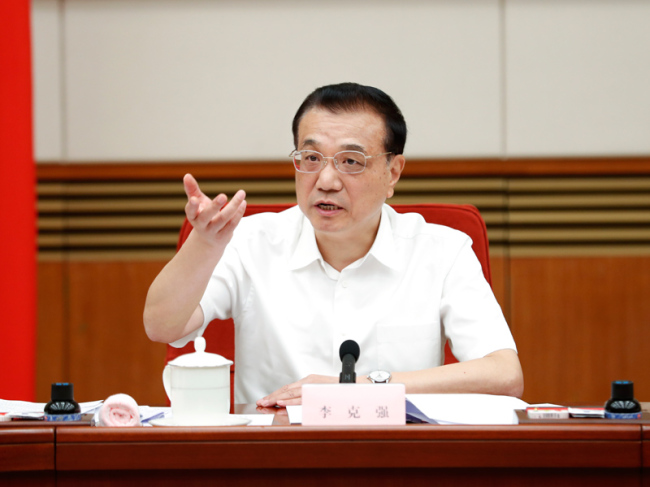(Xinhua)07:32, June 20, 2019
BEIJING, June 19 (Xinhua) — China will spruce up old residential communities in cities at a faster pace, complete the upgrading of rural power grids ahead of schedule, and make greater progress in ensuring the access to safe drinking water in rural areas, as part of the efforts to meet peoples aspirations and ensure and improve their livelihood.
The decisions were made at the State Councils executive meeting chaired by Premier Li Keqiang on Wednesday.
The Chinese government places high importance on the renovation of old urban residential areas. Premier Li Keqiang pointed out in this years Government Work Report that old residential areas in cities, large in both number and area, need to be upgraded with greater efforts, including updating roads and water, power, gas and other facilities, supporting the installation of elevators and the development of barrier-free environment, and improving amenities like markets, convenience stores, pedestrian streets and parking lots.

Premier Li Keqiang [File Photo: Xinhua]
The government must put market players at the center of its services to provide them with an enabling environment. Faced with slower investment growth, we need to get our focus right in keeping investment expansion steady. The focus should be major projects that can meet peoples expectations, spur domestic demand and boost consumption, and run little risk of repetitive construction, Li said, The demand for renovating old residential areas is huge. If work is done well in this field, it could be a significant driver of growth.
It was pointed out at the meeting that renovation scale and standards need to be spelled out as quickly as possible. Pilot programs will be launched this year to gain experience for nationwide implementation. It is important to clearly define the responsibilities of local governments, harness the primary role of residential communities and respect residents desire in this process. Priority will be given to upgrading roads and water, electricity, gas, optical fiber facilities. Elevators will be installed and parking lots will be built in communities where conditions permit.
New mechanisms for financing and investment will be used. Starting from this year, government-subsidized urban housing projects will receive funding support from the central government. Financial institutions and local governments will be encouraged to explore sustainable ways to increase financial support for the renovation of old residential communities. Market-based approaches will be employed to attract the participation by private actors. Long-term mechanisms will be established for follow-up community management.
We need to carry out pilot programs and draw on best practices at home and abroad. Financial and fiscal support will be provided when necessary, Li said.
It was pointed out at the meeting that the new round of rural power grid upgrading, which started in 2016, has improved production and living conditions and stimulated consumption in rural areas.
In the coming months, local governments and power grid companies need to redouble efforts to ensure that all the upgrading tasks specified in the 13th Five-Year Plan will be completed one year ahead of schedule. The time for enterprises to get electricity will be further shortened to improve the business environment.
This year, relevant investment under the central budget will be used entirely for power grid upgrading in poor areas and the proportion of central funding will be raised. Rural power supply monitoring and evaluation systems will be set up and power connection for pumping wells will be included in daily services provided by power grid companies, so as to deliver better power services in rural areas.
China has seen fast progress in power supply since reform and opening up. Yet the time needed for getting electricity and the accessibility still fall short of expectations, due to both institutional issues and inefficiency in the power system, Li said, Power supply is critical to industrialization and rural modernization.
It was also decided at the meeting to step up the implementation of rural water supply projects and fully resolve, by 2020, drinking water issues affecting 60 million rural population such as water undersupply and higher-than-recommended level of fluoride.
Sound mechanisms for water pricing and fee collection will be set up. Private capital will be attracted, through public-private partnership and other forms, for the construction and operation of water supply facilities. Central and local governments will provide fiscal support for safe drinking water projects in poor areas in the central and western regions.
Public goods and final demand are key areas in boosting investment. In delivering safe drinking water in rural areas, the government must set appropriate standards, work within its capacity, and leverage the role of the market. Li said.
![]()




